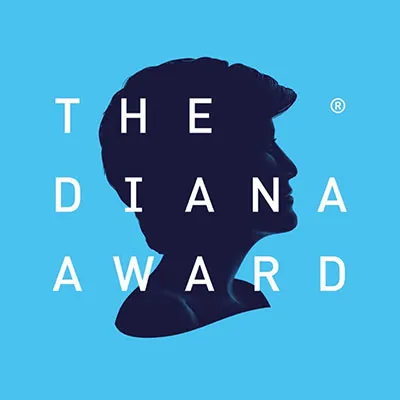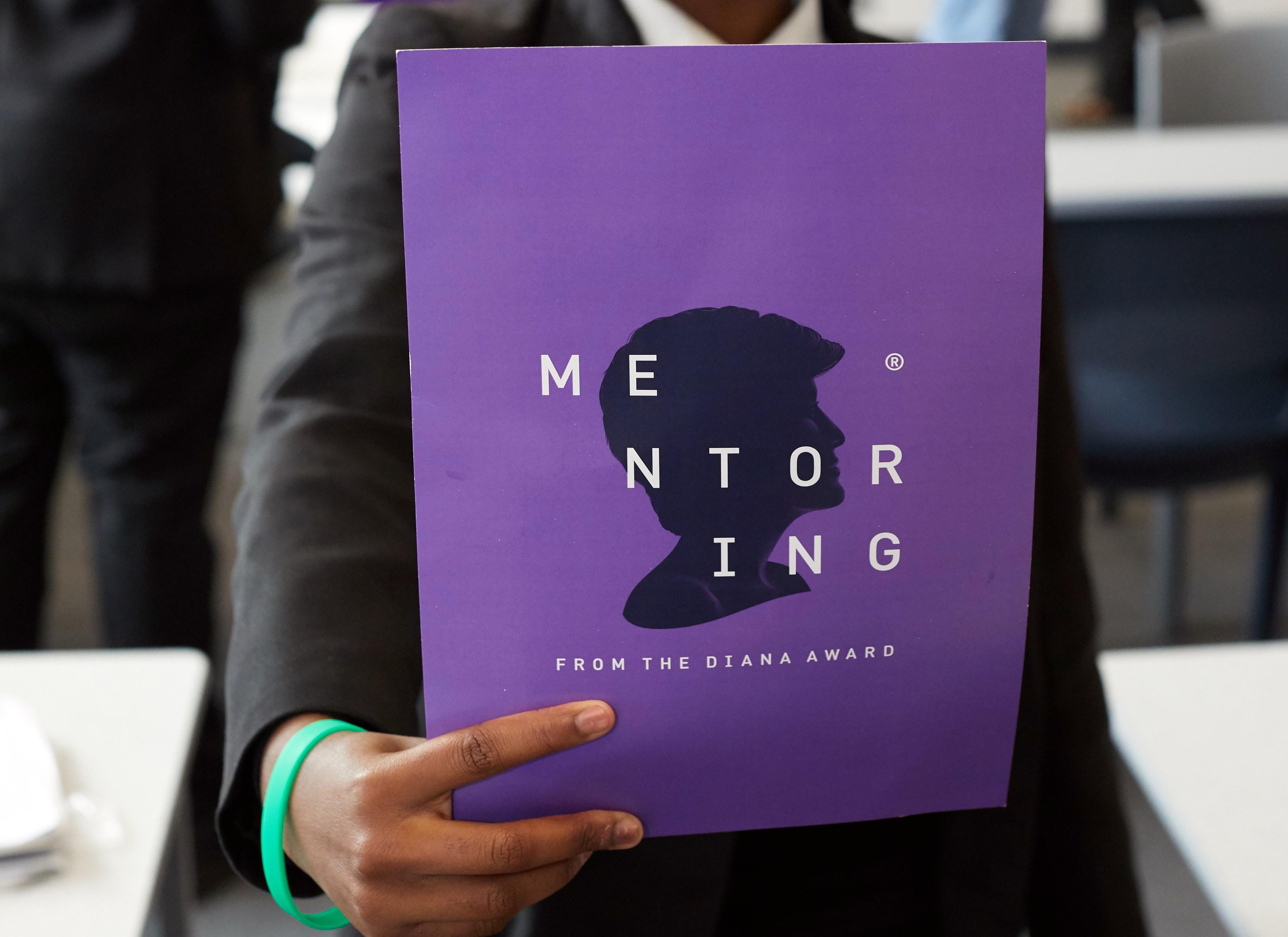Allow me to introduce myself as I would in a workshop. My name is Becky, and I am The Diana Award Mentoring Programme Coordinator for London. My sexuality is queer. My gender identity is genderqueer, and my pronouns are they, them and theirs. I like theatre and performance, particularly drag performance and performance poetry.
We use gendered personal pronouns to refer to others every day, in almost every conversation. International Pronouns Day seeks to raise awareness of third person personal pronouns and normalise conversation around gender identity between friends, family, colleagues, teachers and students.
To understand gender identity and related pronouns, we must first understand the differences between ‘sex’* and ‘gender’*. Feminist and gender theorist Judith Butler summarises in stating that sex is biologically assigned, whereas gender is socially constituted (Butler, 1988). For example, those who are assigned the sex ‘female’ are often seen as ‘women’ and often (rightly or wrongly) assumed to have traits associated with that identity such as being feminine, domestic or emotional.
In English speaking countries, the most common personal pronouns are ‘she, her and hers’ and ‘he him, and his,’ and are used to refer to cisgender* and transgender* ‘women’ and ‘men’ respectively. However, there are other personal pronouns which those with diverse gender identities might prefer. These include:
they/them/theirs
zie/zir/zirs
sie/hir/hirs
xe/xim/xirs
Some might use these personal pronouns because they don’t feel like a man, or a woman. Some might use them because they feel like both a man, and a woman. Some feel between binary gender identities, whereas others feel beyond the gender binary* itself. Some use ‘they, them, and theirs’ pronouns not because they are uncomfortable with traditional ‘she, her, and hers’ or ‘he, him, and his’ pronouns, but because they acknowledge that the gender binary is a social construct, often emerging from the White, Western, colonial ideals of heteronormativity* and cisnormativity*. Recently, the pronouns ‘they, them and theirs’ have permeated media and popular culture. The American Dialect Society chose the singular ‘they’ as the Word of the Year in 2015, and the Washington Post introduced ‘they’ into their stylebook the same year. Celebrities who use ‘they, them and theirs’ pronouns include Sam Smith, Indya Moore, Janelle Monae and Jonathan Van Ness.
Similarly, some individuals might use several different personal pronouns or change their pronouns throughout their life as their understanding of their gender identity shifts and changes. I was assigned the sex ‘female’ but understand my gender identity as ‘genderqueer.’ However, my primary and secondary sexual characteristics indicate to others that my gender identity is ‘woman.’ I describe my gender identity as ‘soup’. I take some ‘masc (masculine)’ ingredients and some ‘femme (feminine)’ ingredients, stir them together and let them simmer. The ingredients and process might change, but the effect is always that of gender fluidity and ambiguity.
You may have heard the descriptive ‘queer’ used as an umbrella term to describe diverse sexualities and gender identities, synonymous with the acronyms ‘LGBT+,’ ‘LGBTQ+’ or ‘LGBTQIA+’. ‘Queer’ can also be used to describe any idea, theory or practice which represents the everyday lived experiences of these individuals, communities, and cultures. In other words, ‘queer’ refers to those who occupy a marginalised position in relation to ‘normal’ or ‘normative’ sexualities and gender identities, and simultaneously working against these categories.
You may have heard the descriptive ‘genderqueer’ or the personal pronouns ‘they, them and theirs’. For those of you who have not yet encountered these terms, ‘genderqueer’ often refers to those who identify with both, neither or certain characteristics of normative, binary gender identities. The pronouns ‘they, them and theirs’ are singular third person pronouns, most often used by those who do not conform to normative, binary gender identities. These include, but are not limited to:
Sex*
The term ‘sex’ refers to primary and secondary sexual characteristics, such as genitalia, chromosomes and hormones.
Gender*
Alternatively, the term ‘gender’ refers to the social, cultural and political expectations compelled by the primary and secondary sexual characteristics of an individual.
Cisgender*
Someone whose gender identity is the same as the sex they were assigned at birth.
Transgender*
An umbrella term used to describe people whose gender is not the same as, or does not sit comfortably with, the sex they were assigned at birth.
Gender Binary*
A system of gender classification in which individuals are categories as 'man' or 'woman' in relation to their 'male' or 'female' sex.
Gender Non-Conforming*
Relating to a person whose behaviour, expression, or appearance does not conform to prevailing cultural and social expectations about what is appropriate to their gender.
Non-Binary*
A term for individuals whose gender identity does not conform to the gender binary of 'man' or 'woman'. A non-binary person might think of themselves as neither 'man' nor 'woman,' between 'man' and 'woman,' both 'man' and 'woman,' or sometimes 'man' and sometimes 'woman'.
Gender Queer*
People who don’t identify with traditional categories around gender identity and/or sexual orientation.
Gender Fluid*
A person who does not identify themselves as having a fixed gender.
Gender Neutral*
Having no specific gender identity or having a gender identity that is neutral.
Heteronormativity*
The attitude that promotes heterosexuality as the normal or preferred sexual orientation. Heterosexuality is the quality or characteristic of being sexually attracted solely to people of the opposite sex.
Cisnormativity*
The assumption that all, or almost all, individuals are cisgender, as well as the compulsion for individuals to conform to gendered expectations in relation to their assigned sex.
Agender*
Having no specific gender identity or having a gender identity that is neutral.
Two-Spirit*
A term most used in Indigenous and First Nation culture, referring to an individual who has both a masculine and a feminine spirit.
Khawaja Sira*
Khwaja Sira is an umbrella term that encompasses all gender-variant identities, often called the 'third-gender'.
I began using they, them and their pronouns two years ago, whilst studying for a postgraduate degree in Education at the University of Cambridge. Though my undergraduate institution was liberal and inclusive, its small student population made the shift from ‘she, her and hers’ pronouns to ‘they, them and theirs’ pronouns more difficult. I felt as though I had to ‘come out’ to the community again. The University of Cambridge held the possibility I reintroduction and reinvention, in that I could explore my genderqueer identity away from those who had known me only as ‘woman’.
Unsurprisingly, I encountered resistance to my gender identity and pronouns. Though singular third person pronouns are approaching normalisation in the United Kingdom, many international students and staff members often struggled to understand them either conceptually or grammatically. Many UK and EU students and staff members understood them but failed or refused to use them. I was consistently misgendered in my College and Faculty, even after introducing my pronouns during classes, seminars and conferences. The experience of misgendering was – and still is – jarring. I would often feel uncomfortable correcting the person who had misgendered me. If I did correct them, they would often apologise and explain their mistake. These conversations often ended in apologising to the person who had misgendered me, as though my gender identity were a nuisance to others. At other times, these conversations ended in arguing with the person who has misgendered me. Constantly explaining and evidencing my gender identity and personal pronouns was emotionally exhausting, and undoubtedly impacted my academic attainment.
International Pronouns Day argues that being referred to with the personal pronouns of your choosing is a ‘…basic human dignity, like calling someone by their name.’ Using the right pronouns to refer to someone can make them feel visible, respected and understood in their gender identity. On the other hand, misgendering – using the wrong pronouns to refer to someone – or deadnaming – referring to someone using a name they used before their transition – can make them feel invisible, disrespected and misunderstood. If you find using different pronouns uncomfortable, I encourage you to examine these feelings, empathise with those who use these pronouns, and acknowledge the difficulty and discomfort they might feel when they are misgendered, deadnamed or constantly compelled to correct others. If you misgender or deadname someone, just apologise and correct yourself. We all make mistakes, so you might be tempted to defend or explain yourself. I can assure you that it will not be the first time that person has been misgendered or deadnamed, nor the first time they have heard your explanation. These conversations tend to be arduous, tedious and emotionally laborious.
Conversations around sex, gender identity and personal pronouns might feel uncomfortable, but normalising the sharing, respecting, and educating about personal pronouns is so important to those with diverse gender identities. Although some are content to hold conversations about their gender identity, it is important to remember that it is not always the responsibility of marginalised individuals and communities to educate others about their identities and experiences. Information about diverse sexualities and gender identities can be found through books, newspaper articles, blog posts like this one, online videos, social media and organisational websites.
Here are ten suggestions to support your work against transphobic, homophobic, biphobic and queerphobic harassment, discrimination and violence in your school, university, or workplace:
- Refer to others with the personal pronouns that they use to describe themselves.
- Include your pronouns on websites, social media and in email signatures.
- Introduce your pronouns at workshops, conferences and meetings.
- Ask your students discreetly which personal pronouns they use and if you can use these around other students, staff members, parents, guardians or carers. If you cannot ask them discreetly, ask your students to write down their pronouns anonymously
- If you misgender or deadname someone, just apologise, correct yourself and move on. If you misgender someone and are corrected, try not to defensive and explain your mistake. Just acknowledge your mistake, correct yourself and move on.
- Correct others when they misgender or deadname someone.
- Establish gender neutral bathrooms in your school, university or workplace.
- Use gender neutral language when addressing a group of people. In an informal setting, you might like to use ‘friends,’ or ‘folks.’ In a classroom setting, you might like to use ‘everyone,’ or ‘students’ instead of ‘boys and girls.’ In a formal setting, you might like to use ‘team,’ ‘colleagues,’ ‘guests,’ or ‘attendees’ instead of ‘ladies and gentlemen.’
- Do not assume the gender identity of a participant, student, colleague or peer. If you don’t know which personal pronouns someone uses, just ask:
‘What are your pronouns?’
‘My pronouns are they, them and theirs.’
‘Thank you. My pronouns are she, her and hers.’
10. If you are struggling to integrate singular third person personal pronouns into language, try practising with others:
‘Becky is The Diana Award Mentoring Programme Coordinator for London.
They are genderqueer and use they, them, and theirs pronouns.’
Take a look at these resources for more information about diverse gender identities and personal pronouns:
LGBTQ+ Inclusive Curriculum Guide
LGBTQ+ Terms and Definitions
Understanding Gender (Primary)
Understanding Gender (Secondary)
Transgender Inclusion and Transphobic Bullying Guide
International Pronouns Day
Gendered Intelligence UK
Mermaids UK
Stonewall UK





